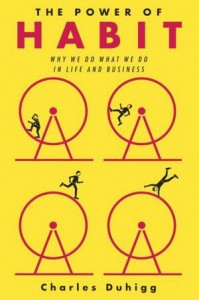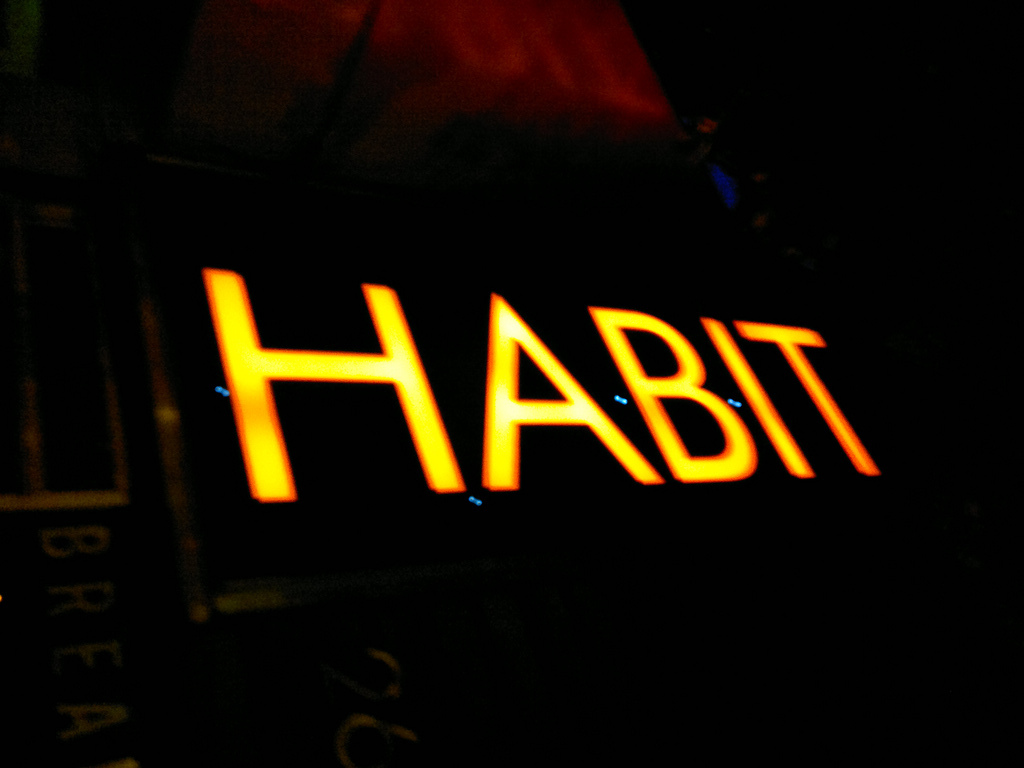The Power of Habit
Did you know that we conduct 45% of our daily actions with little to no thought? Charles Duhigg, the author of The Power of Habit: Why We Do What We Do in Life and Business, highlights extensive brain research that explains how nearly half of our actions are habitual and not necessarily conducted with conscious awareness.
 This concept can be unsettling when applied to our own lives and the organizations we are associated with each day. The book challenges us to reflect on our habits and identify ways to better both ourselves and our organizations through small changes in our habits.
This concept can be unsettling when applied to our own lives and the organizations we are associated with each day. The book challenges us to reflect on our habits and identify ways to better both ourselves and our organizations through small changes in our habits.
Duhigg presents a framework to examine our habits and then engage in a approach to create new habits that better meet our personal and institutional goals. The four main steps are to identify the routine, experiment with rewards, isolate the cues, and then create a plan. The following video, narrated by the author overviews these four steps: The Power of Habit Video.
In addition to examining how to improve our habits, Duhigg also delves into the concept of Keystone Habits, which are defined as, “small changes or habits that people introduce into their routines that unintentionally carry over into other aspects of their lives.” To illustrate this concept, my personal example is that of exercise as a Keystone Habit. When I am able to maintain a regular exercise routine, then several other positive habits naturally follow, such as the need to be organized, to plan better, to carefully monitor nutrition and the number of hours I sleep each night, which lead to more energy, more time for reflection, and better life-work balance, to name a few.
I extended the concept to our students and asked a high school class to think about their Keystone Habits. It was interesting to note how many of them identified how the process of allocating time each evening to plan their schedule and set priorities for their next day would have the greatest impact on their lives. This is a classic Keystone Habit.
If Keystone Habits were so influential on individuals, then it is natural to consider the same question for organizations. As I reflected on the learning from this book, I was continually drawn back to the question of EAB’s Keystone Habit to ensure we are offering the best educational program possible. To that end, I have been reading the influential work of John Hattie and his writings about learning communities. In his book, Visible Learning: A Synthesis of Over 800 Meta-Analyses Relating to Achievement, Hattie flips the approach to school improvement to a focus on learning rather than on teaching. While this may appear to be a simple shift in language, the implications are profound. As we continue to reflect on EAB’s Keystone Habits, however, Hattie’s language related to learning communities continues to emerge as an important concept to lead our improvement efforts.
Whether it is a reflection on our personal habits or those of the organizations we are associated with, it is helpful to examine the habits that guide our actions each day, especially if up to 45% of these habits are conducted with little to no thought.
Featured image: cc licensed ( CC BY 2.0 ) flickr photo by roland: http://www.flickr.com/photos/roland/5868791966/sizes/l/
O Poder do Hábito
Você sabia que nós conduzimos 45% de nossas ações diárias com pouco ou nenhum pensamento? Charles Duhigg, autor do livro The Power of Habit: Why We Do What We Do in Life and Business, destaca uma extensa pesquisa sobre o cérebro que explica como quase metade das nossas ações são habituais e não necessariamente realizadas com consciência.
 Este conceito pode ser perturbador quando aplicado em nossas próprias vidas e nas organizações em que estamos associados a cada dia. O livro nos desafia a refletir sobre os nossos hábitos e identificar maneiras de melhorar a nós mesmos e nossas organizações por meio de pequenas mudanças em nossos hábitos.
Este conceito pode ser perturbador quando aplicado em nossas próprias vidas e nas organizações em que estamos associados a cada dia. O livro nos desafia a refletir sobre os nossos hábitos e identificar maneiras de melhorar a nós mesmos e nossas organizações por meio de pequenas mudanças em nossos hábitos.
Duhigg apresenta uma estrutura para analisar os nossos hábitos e, em seguida, envolver-se em uma abordagem para criar novos hábitos que atendam melhor nossos objetivos pessoais e institucionais. Os quatro passos principais são: identificar a rotina, experiência com recompensas, isolar os sinais, e em seguida criar um plano. O vídeo a seguir narrado pelo autor resume-se em quatro etapas: The Power of Habit Video.
Além de analisar como melhorar os nossos hábitos, Duhigg também investiga o conceito de Keystone Habits (Hábitos Chave), que é definido como “pequenas alterações ou hábitos que as pessoas introduzem em suas rotinas que, involuntariamente transitam em outros aspectos de suas vidas.” Para ilustrar este conceito, o meu exemplo pessoal é que eu me exercito, tornando a atividade física um Keystone Habits. Quando eu sou capaz de manter uma rotina regular de exercícios, em seguida, vários outros hábitos positivos naturalmente aparecem, como a necessidade de me organizar, planejar melhor, acompanhar atentamente a nutrição eo número de horas que durmo todas as noites, que me levam a ter mais energia , mais tempo para reflexão, e o melhor equilíbrio entre meu trabalho e minha vida, entre outros.
Eu ampliei o conceito para os nossos alunos e pedi a uma turma do High School para pensar sobre seus hábitos de Keystone. Foi interessante notar como muitos deles encontraram uma forma de separar um tempo toda noite para planejar e definir prioridades para o dia seguinte e como isso teve um grande impacto em suas vidas. Este é um hábito Keystone clássico.
Se o Hábito Keystone foi tão influente sobre os indivíduos, então é natural considerar a mesma pergunta para as organizações. Ao refletir sobre a aprendizagem a partir deste livro, eu fiquei atraído de volta à questão do hábito Keystone da EAB para garantir que estamos oferecendo o melhor programa educacional possível. Para isso, eu tenho lido o trabalho influente de John Hattie sobre comunidades de aprendizagem (learning communities). Em seu livro, Visible Learning: A Synthesis of Over 800 Meta-Analyses Relating to Achievement, Hattie inverte a abordagem para a melhoria da escola como foco na aprendizagem e não no ensino. Embora isso possa parecer uma simples mudança na linguagem, as implicações são profundas. À medida que continuamos a refletir sobre o Keystone Habits da EAB, a linguagem de Hattie relacionadas com as comunidades de aprendizagem continua a emergir como um conceito importante para conduzir os nossos esforços de melhoria.
Seja uma reflexão sobre os nossos hábitos pessoais ou das organizações que estamos associados , é útil para examinar os hábitos que norteiam nossas ações de cada dia, especialmente se até 45% desses hábitos são realizadas com pouco ou nenhum pensamento.
Featured image: cc licensed ( CC BY 2.0 ) flickr photo by roland: http://www.flickr.com/photos/roland/5868791966/sizes/l/
